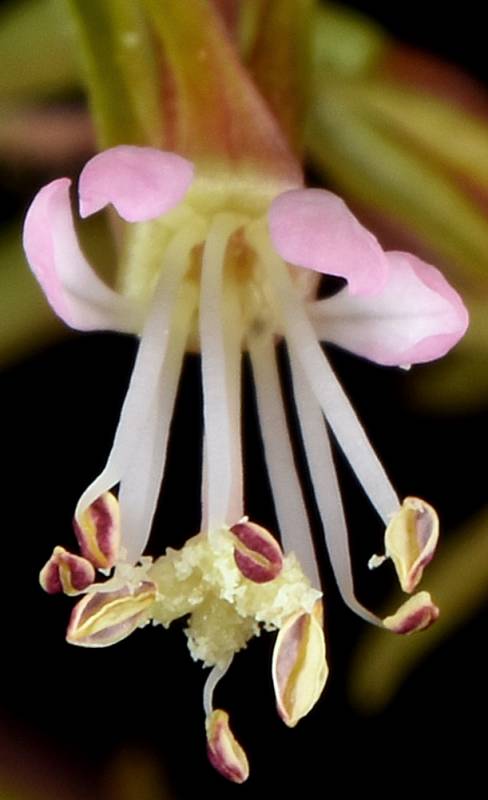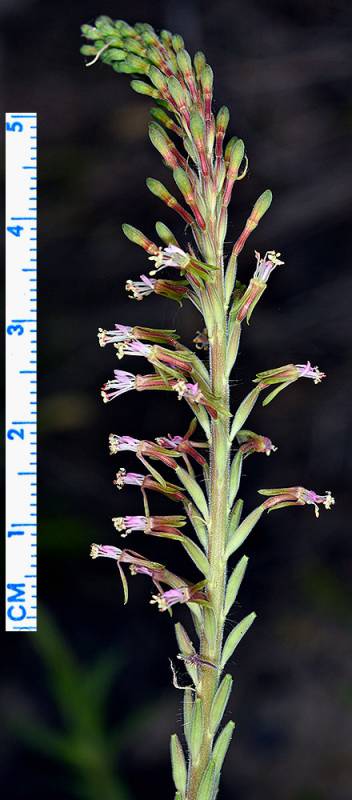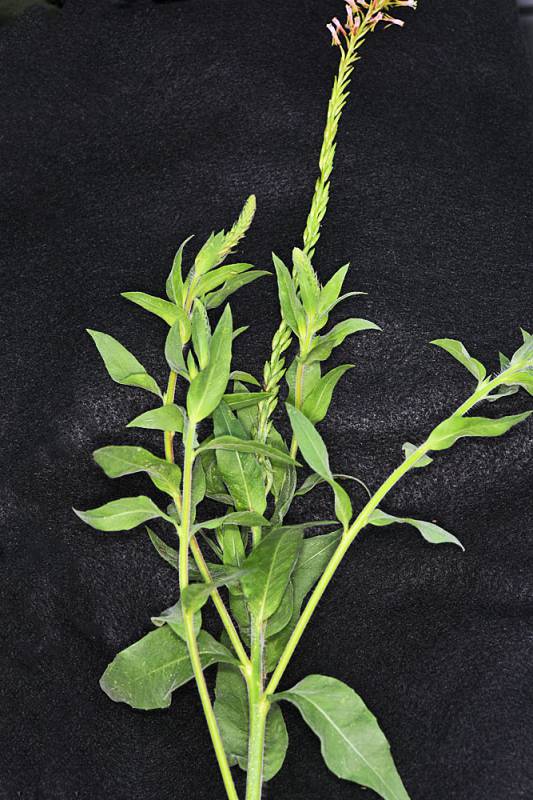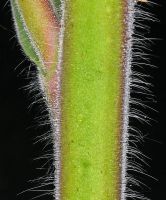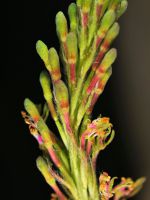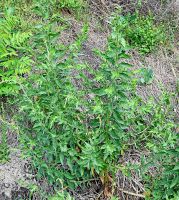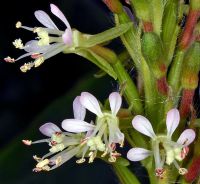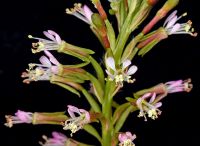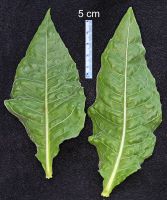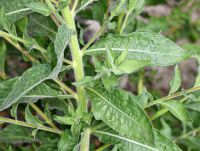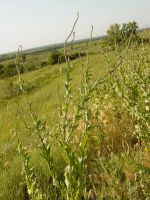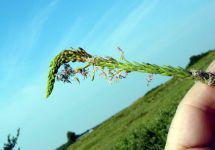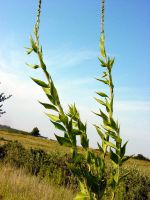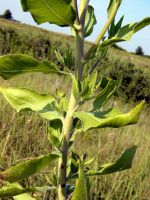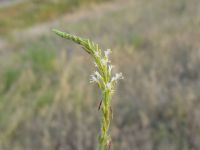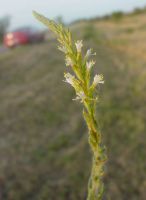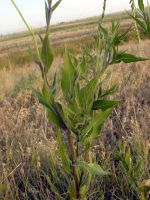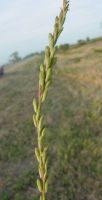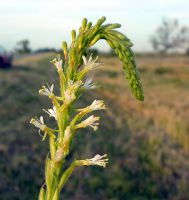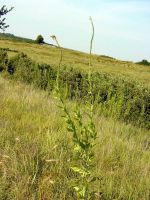Distribution: Occurring east of the Cascades crest in Washington; south-central Washington to eastern Oregon, Nevada, and Arizona, east to North Dakota,, Iowa, and Louisiana; introduced in California and the eastern U.S., South America, Asia, and Australia.
Habitat: Meadows, stream banks, roadsides, sandy or rocky slopes, often where disturbed.
Flowers: June-September
Origin: Introduced from the central U.S.
Growth Duration: Annual
Conservation Status: Not of concern
Pollination: Bees, moths
Annual from a taproot, the stem single, simple below and branched above, 0.2-2 m. tall, puberulent, but also with soft, spreading hairs 2 mm. long.
Leaves alternate, the basal leaves spatulate, the lower cauline leaves oblong, the others oblong-lanceolate to lanceolate, 4-15 cm. long, entire to wavy-dentate, gradually reduced upward to very small, linear floral bracts.
Inflorescence of many-flowered spikes, 1-3 dm. long; calyx tube very slender, 2-3 mm. long, with 4 distinct, reflexed lobes 2-3 mm. long; petals 4, short-clawed, pinkish, 2 mm. long; stamens 8, filaments without basal scales; ovary inferior, 4-celled.
Fruit hardened, 6-10 mm. long, spindle-shaped, glabrous, 4-angled by not winged.
Publication: Syst. Bot. Monogr. 83: 211. 2007.
Gaura parviflora Douglas ex Lehm. [HC]
PNW Herbaria: Specimen records of Oenothera curtiflora in the Consortium of Pacific Northwest Herbaria database
WA Flora Checklist: Oenothera curtiflora checklist entry
OregonFlora: Oenothera curtiflora information
E-Flora BC: Oenothera curtiflora atlas page
CalPhotos: Oenothera curtiflora photos

